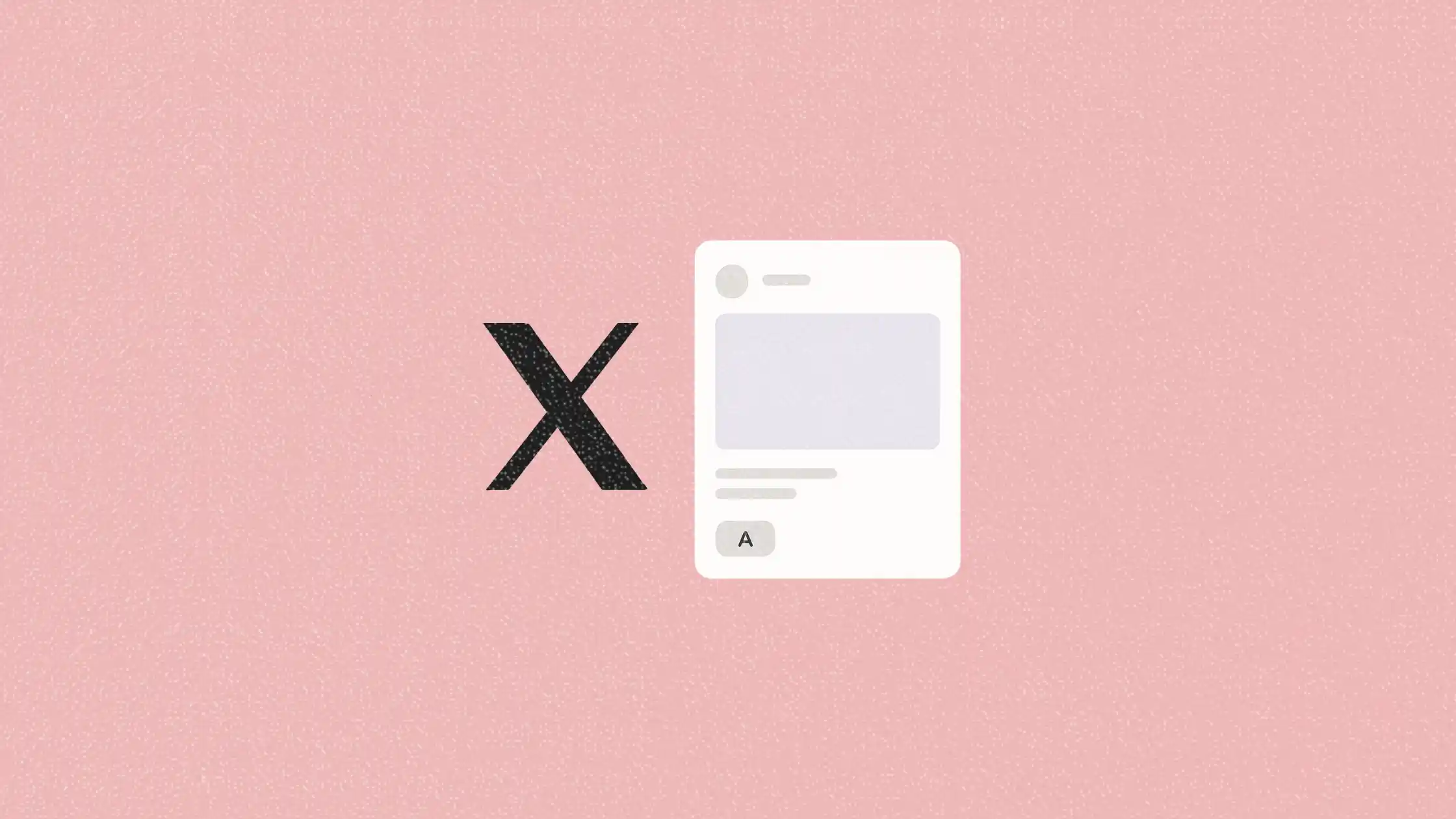X’s new ad policy rewards visual polish over clickbait
X’s algorithm will now favor ads without emojis, links, or gimmicks. Here’s what brands should know

Elon Musk’s X is rewriting the rules of digital advertising, and this time it’s about style over sizzle.
The platform formerly known as Twitter is rolling out a new ad quality system that slashes costs for ads it deems “aesthetic” as long as they ditch hashtags, emojis, and links.
This article explores X’s updated ad quality policy, how the new aesthetic scoring system works, and what marketers need to consider to avoid higher CPMs and feed suppression. For a platform trying to win back big brands after a rocky rebrand, this could be a turning point or just another style-over-substance move.
Short on time?
Here is a table of content for quick access:
- What’s happening with ads on X
- How the aesthetic scoring system works
- AI enters the ad experience
- What marketers should know

What's happening with ads on X
Monique Pintarelli, X’s Head of Americas, announced a new push to elevate ad quality by rewarding more “elegant” formats. According to an internal policy update, ads that avoid hashtags, excessive emojis, links, and gimmicky visuals will receive preferential pricing and distribution.
Together we can improve the user experience, boost brand relevance and performance, and build a better advertising ecosystem. https://t.co/0tbdGiY8hj
— Monique Pintarelli (@MoniquePintarel) July 31, 2025
This new aesthetic-based scoring will feed into X’s broader ad quality rating, which already includes performance metrics like engagement, recency, and relevance. Ads that pass the aesthetic test will benefit from cheaper CPMs and better placement in user feeds. Those that don’t will cost more and could be algorithmically buried.
Pintarelli said the goal is to combat “spammy-type advertising” and create a better user experience while offering brands more meaningful engagement. For now, the aesthetic standards serve as guidance, but stricter enforcement is coming.
How the aesthetic scoring system works
Under the new policy, each ad will be assigned an “aesthetic score” based on visual and textual criteria. Ads that follow the guidelines, such as avoiding multiple emojis, URL clutter, and sloppy formatting, will be favored in the auction.
Visuals also matter. X will downgrade any creative deemed gimmicky, excessively cropped, or indecipherable. While the company hasn’t released the exact scoring rubric, Pintarelli confirmed the aesthetic score will influence both price and visibility.
The aesthetic score acts as a modifier within the broader ad quality algorithm, directly impacting how much brands pay to reach audiences. If an ad doesn’t meet X’s standards, expect to pay more to push it through.
𝕏 is moving to charging for ads based on vertical size, so an ad that takes up the whole screen would cost more than an ad that takes up 1/4 of the screen, otherwise the incentive is to create giant ads that impair the user experience
— Elon Musk (@elonmusk) June 27, 2025
AI enters the ad experience
In tandem with the aesthetic policy, X is rolling out a new AI feature on ads: an “Explain this post” button powered by Grok, xAI’s chatbot. When clicked, the tool pulls from the advertiser’s website and other sources to fact-check or contextualize the ad.
While this feature is still in beta and Grok’s accuracy remains inconsistent, it signals X’s intent to weave AI into every part of the user experience, including brand interactions.
The move follows other AI-driven tools launched earlier this year, including generative creative and performance measurement tools. X is betting on AI to revitalize its struggling ad business and differentiate from competitors like Meta and TikTok.
What marketers should know
X (formerly Twitter) is quietly changing how ads perform on the platform. Aesthetic quality, transparency, and copywriting discipline are no longer just nice to have. They are now essential.
Here are four key updates marketers need to keep in mind:
1. Clickbait is now a cost center
For years, performance marketers leaned on emojis, hashtags, and link-laden posts to maximize clicks. On X, that playbook now comes with a higher price. Brands will need to rethink copy and design with elegance, not urgency, as the top priority.
2. Design matters more than ever
“Pretty” ads aren’t just good branding now, they’re cheaper. This may shift creative strategy toward more minimalist visuals and away from the meme-heavy, maximalist aesthetic that defined social ad culture in recent years.
3. Feed visibility is at stake
Poorly designed ads won’t just be penalized at auction. They’ll be suppressed in user feeds. That means even with a big budget, bad design might not break through.
4. The AI transparency layer cuts both ways
The new Grok button could help build trust or expose sloppy messaging. Marketers should assume their claims will be auto-audited and proactively align creative with verifiable landing pages.
X is clearly trying to reposition itself as a premium ad platform after years of brand safety concerns and spam overload. For brands still active on the platform, aligning with these new standards could unlock better economics and reach. But it also adds complexity. Aesthetic quality is now a lever in campaign performance, not just a design preference.
As platforms increasingly tie pricing and performance to quality metrics, whether visual, factual, or ethical, marketers should expect to balance creativity with compliance across every ad channel.




